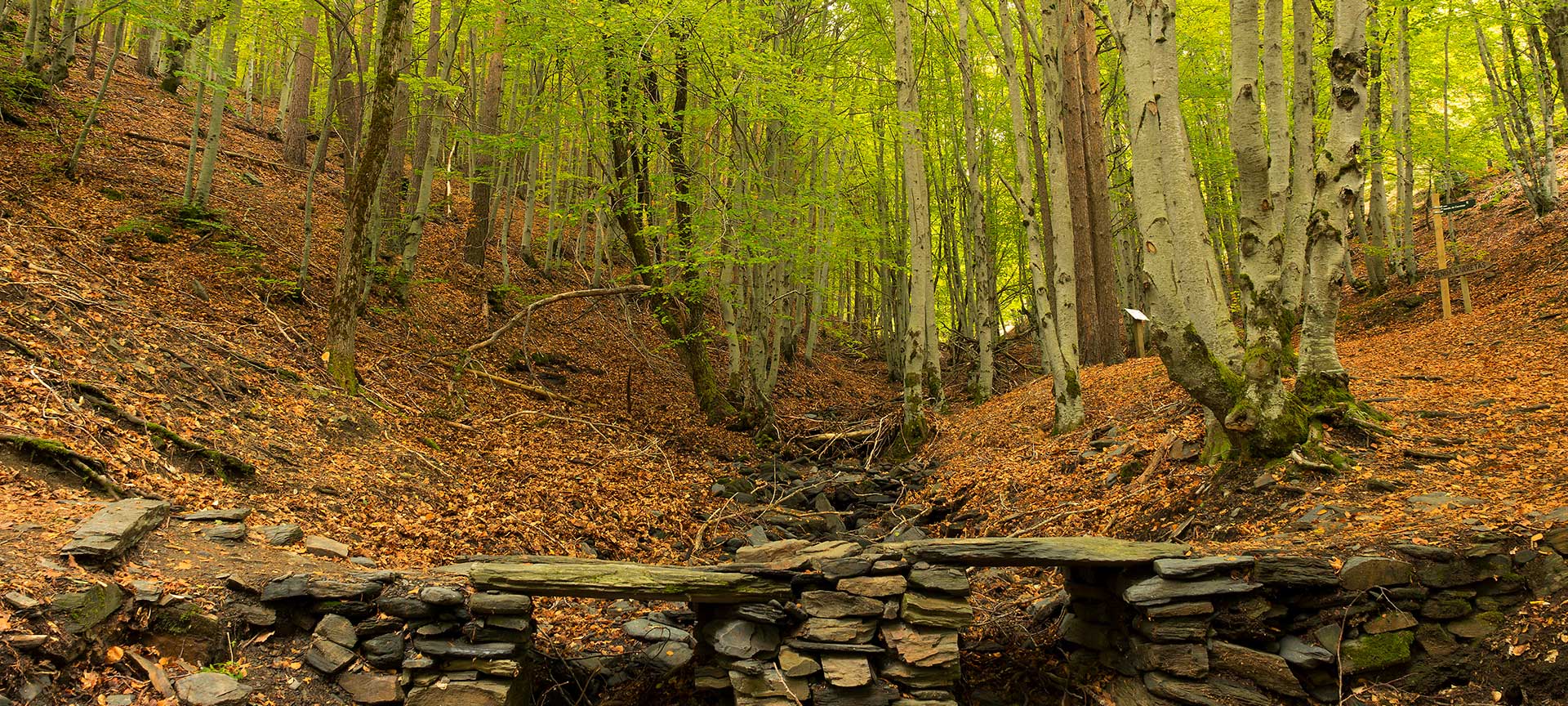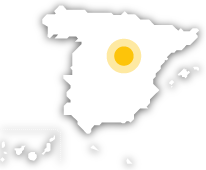
Sierra Norte de Guadalajara Natural Park

The mountainous microcosm of Ayllón
Also known as Sierra de Ayllón, this natural space preserves the rugged north-western edge of the Guadalajara region, very sparsely populated and possessing exceptional value in terms of botanicals, scenery and wildlife.
Large in size, the park rests across the territory of 35 municipalities with less than 3,000 inhabitants. Within its bounds towers the peak of Castilla-La Mancha, Pico del Lobo, at 2,273 metres, as well as other famous dosmiles in the region such as Cerrón, Ocejón and Peña Cebollera Vieja, also known as Tres Provincias (Three Provinces) because it borders Segovia and Madrid at the same time.This rugged relief is home to a complete array of all that is remarkable in the mountains of the Sistema Central, earning Ayllón the status of both Site of Community Importance (LIC for its acronym in Spanish) and Special Protection Area for Birds (ZEPA). It includes some of the southernmost beech forests in Europe. One of them, the famous Hayedo de Tejera Negra, has a special limited visiting system. It was one of the three pre-existing natural areas in the region before its integration into the larger park, which was established in 2011 and covers more than 100,000 hectares. The other two are the Pico del Lobo-Cebollera Nature Reserve and the Pelagallinas River Reserve.
Debe activar Javascript para poder utilizar este servicio
Sierra Norte de Guadalajara Natural Park
Cogolludo visitor centre
Guadalajara (Castilla-La Mancha)
Activa JS
What you need to know
-
Cultural information
The small villages in the park are striking for their architecture, which is fully integrated into their surroundings. The best examples are the Black Architecture villages, with walls and roofs built of the slate and quartzite dominant in the area.Cattle farming has also marked the landscape, not only creating meadows and pastures where there were none before, but also pastoral architecture such as tainas, sheepfolds and corrals. There are also examples of Romanesque art such as the hermitage of Santa Coloma, in Albendiego, with its spectacular apse.
-
Environmental information
The great contrasts between the high altitudes and the valleys are striking, not to mention how little the region has been disturbed. There are not only forests of common species in the north of the country and the continent (beech, oak, holly, birch and serval), but also pine forests, fantastic riverside groves, shrub species such as heather, rockrose, hawthorn and rose hip, and a variety of very unique protected flora.The fauna includes 260 species of vertebrates, most of which are the object of conservation programs. The Iberian wolf is gradually recolonising the area, which preys on species such as roe deer and wild boar. Other notable species include wildcat, otter, many varieties of bats, amphibians such as the midwife toad or Bonelli's eagle, among others.
-
Information for visits
Since the area is so large, it can be accessed from various points. Four official visitor centres operate in the area. They are located in the towns of Cantalojas (two kilometres from the village in the direction of the Tejera Negra beech forest), Cogolludo (Plaza Mayor, 1), El Cardoso de la Sierra (at the village exit, in the direction of Colmenar de la Sierra) and Hiendelaencina (Calle Mayor, 1); the latter is usually only open at weekends. It is advisable to check the calendar and opening hours of all of them before visiting.

